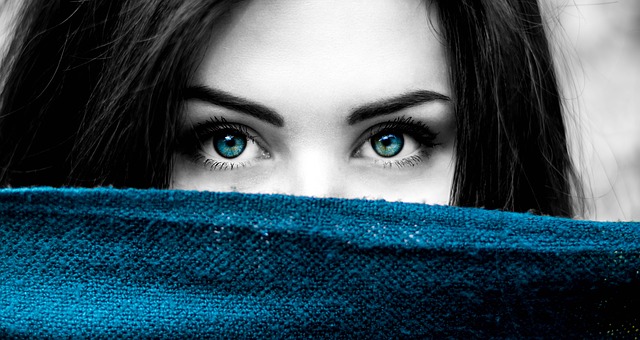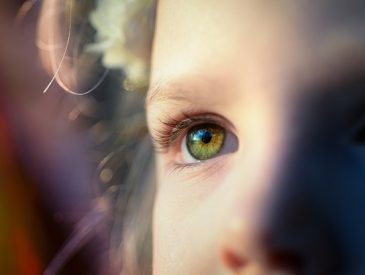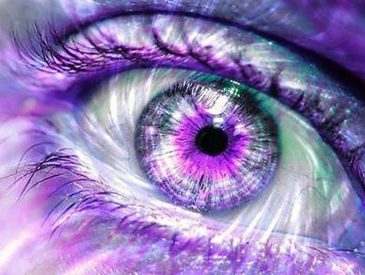Are blue eyes a sign of inbreeding? It surprises me to say that the majority of Europeans with blue eyes seem to be fairly closely related. The DNA of the individual can reveal this to scientists.
The fact that the majority of blue-eyed Europeans have the same specific DNA difference that gives them their blue eyes serves as one form of proof. This implies that the individuals who share this DNA difference all descended from the same primary ancestor (or founder), as there are numerous ways to acquire blue eyes. The original blue-eyed ancestor most likely lived between 6,000 and 10,000 years ago, according to research that looked more closely at the DNA.
Table of Contents
What Is Inbreeding?
The breeding of organisms with close ancestry relationships is known as inbreeding. The biological purpose of mating is to shuffle DNA, so doing so is against the grain. The 23 pairs of chromosomes that make up human DNA contain hundreds of thousands of genes, and each gene has two copies known as alleles. Your genes also influence biological characteristics like your blood type and different aspects of your appearance, such as the color of your hair and eyes. These genes can be divided into two groups: dominant and recessive. You will develop the trait of the dominant gene if one of the pair’s genes is dominant. The two genes must both be recessive in order for a trait to be caused by the recessive gene.
Are Blue Eyes A Sign Of Inbreeding?
You’ll need both of them to have blue eyes because the recessive blue eye gene is a recessive gene. This is significant because recessive alleles are responsible for some congenital defects and genetic diseases, like cystic fibrosis. The likelihood of being born with such conditions is stacked against you by inbreeding. The likelihood of blood-relative mating partners having the same recessive gene is greatly increased because of their similar DNA. According to a 2011 study, the rate of near natal and childhood death increases if the child comes from a first cousin union, nearly doubling in certain countries.

Is Everyone With Blue Eyes Related?
A baby with a benign genetic mutation was born in Europe between 6,000 and 10,000 years ago. Researchers at the University of Copenhagen claim that that tiny DNA blip was associated with blue eyes.
According to research, this ancient human was the first to have blue eyes, and every person with blue eyes today is a (very) distant descendant of this person.
“We all had brown eyes at first, said Hans Eiberg, an associate professor in the university’s Department of Cellular and Molecular Medicine.
“But a genetic change to our chromosomes’ OCA2 gene produced a “switch” that essentially prevented the development of brown eyes.”
Eye color depends on how much of a pigment called melanin lives in the iris of the eye. Our skin, eyes, and hair colors are also influenced by melanin.
By “diluting” brown eyes to a shade of blue, this genetic switch restricts how much melanin is produced in the iris.
In addition to having significantly less melanin in their iris than those with brown, hazel, or green eyes, people with blue eyes also tend to have very little variation in the region of their DNA that controls the production of melanin.
On the other hand, there is a lot more variation in people with brown eyes.
“We can infer from this that everyone with blue eyes has a common ancestor, said Eiberg. “They all share the exact same switch in their DNA, which they all inherited.”
Will Blue Eyes Come With A Few Risks?
The retina at the back of the eye (retina) is thought to be protected by melanin in the iris from damage brought on by UV radiation and high-energy visible blue light from the sun and some artificial sources.
Blue eyes may be more vulnerable to some injuries because they have less melanin than the majority of other eye colors.
Lighter iris colors have been connected to: according to research
- A higher risk of ocular uveal melanoma (a type of eye cancer)
- A lower risk of developing cataracts
- No difference in the risk of developing age-related macular degeneration
Eye doctors frequently advise people with blue eyes to be a little more cautious about their exposure to sunlight because many people with this eye color are more sensitive to light and may have a higher risk of retinal damage from UV rays.
Wearing sunglasses that block 100% of UV (and most blue light) should begin as early in life as possible because eye damage from UV and blue light appears to be related to your lifetime exposure to these rays.
Blue eyes can also be shielded from UV rays by using photochromic lenses. These transparent lenses are 100% UV-blocking both inside and out, and they automatically darken in the presence of direct sunlight.

Interesting Facts About Blue Eyes
Blue Eyes Are More Light-Sensitive
Melanin in the iris of the eye appears to help protect the back of the eye from damage caused by UV radiation and high-energy visible “blue” light from sunlight and artificial sources of these rays.
Photophobia affects more people with blue eyes than with eyes of other colors because blue eyes have less melanin than eyes of other colors, such as green, hazel, or brown. For these reasons, having less melanin in your irises means that you need to shield your eyes from the sun’s UV rays more. Therefore, it’s advised that people with blue eyes avoid spending a lot of time in the sun and try to always wear eye protection when they’re outside. Learn more about Are Blue Eyes More Sensitive To Light?
Only 8% of People in the World Have Blue Eyes
If you have blue eyes, you might not even be aware that you are a member of one of the world’s most elite groups! Only 8% of people in the world have blue eyes because they are genetically recessive. While blue eyes are considerably less common than brown eyes worldwide, people from nations near the Baltic Sea in northern Europe frequently have them.
Blue Irises Don’t Contain Blue Pigment
How much melanin is found in the iris determines the color of our eyes. Similar to how water and the sky are blue, blue eyes are colored by light scattering, which causes more blue light to reflect back out into the environment.
The iris has two layers. The back layer, also known as the pigment epithelium, contains brown pigment in almost everyone’s case, even those with blue eyes.
Fibers and cells that overlap make up the stroma, the iris’ outermost layer. Some of the cells contain brown pigment for people with brown eyes. The fibers scatter and absorb some of the longer wavelengths of light that enter if this front layer has no pigment at all. The eyes appear to be blue because more blue light leaks out again.
Birth Color Does Not Ensure Lifetime Eye Color
Blue eyes are among the most typical eye colors at birth, despite the fact that they are rare. Most Caucasian babies are born with blue eyes because the human eye does not contain the full amount of pigment it will have as an adult. As more melanin is produced in the iris during early childhood, the child’s eye color changes because human melanin tends to develop over time.
Alcoholism Risk May Be Higher in Those With Blue Eyes
According to a recent study, people with blue eyes are more likely to develop an alcohol dependence than people with darker eyes. This finding therefore supports the notion that there is a genetic component to alcoholism.
A study published in American Journal of Medical Genetics, Part B: Neuropsychiatric Genetics found that Comparing European Americans with blue eyes to matched controls with darker eye colors, European Americans with blue eyes had up to 83 percent higher odds of developing alcohol dependence. According to this study, there may be a genetic component to alcoholism that is connected to the genetic sequences that determine eye color, which may help to explain the association. However, at this point, the cause of the correlation is still unclear, and more study is needed to fully comprehend this correlation in the results.
How Is Eye Color Determined?
The amount of melanin in the eye depends on genetic makeup. Eye color does not contain any blue or green pigment. The same brown melanin, which is not capable of diffusing light, is present in eyes of all colors. The amount and distribution of brown melanin on the two layers of the iris are what cause the variations in eye colors. People with brown eyes have melanin on both the front and back layers of the iris, which absorbs more light and gives the iris a brown appearance. Melanin-free eyes scatter light because more blue light reflects out of them, giving the appearance of having blue eyes.
The genetic material that determines eye color is carried on the chromosomes that a child inherits. The amount of melanin produced varies because of variations in the copies that each parent gave the child. Eye color is largely influenced by a region on chromosome 15. In this region, you can find the HERC2 and OCA2 genes.
The P protein, which is found in the melanocytes (specialized cells that produce melanin), is produced using instructions from the OCA2 gene, formerly known as the P gene. If more protein is produced, more melanin is received by the eyes, which results in eyes that lean more toward the brown end of the color spectrum. Less protein is produced, which results in the eyes receiving less melanin and a shift in eye color toward the blue end of the spectrum. A pathway for melanin is provided by other genes, even though the OCA2 gene controls almost 75% of eye color. A child may have more or less melanin than either parent depending on the effects of these genes on melanin levels. Due to these variations, either brown-eyed parents will have a blue-eyed child, or blue-eyed parents will have a brown-eyed child. More likely than the other is the first. (Check for Can Black People Have Blue Eyes? )
Eye Color: Is It Inherited?
It was once believed that a single hereditary trait determined an individual’s eye color. It was once believed that each person received one gene for their eye color from each of their parents, and that the dominant gene determined their eye color. According to this theory, only two genes could produce blue eyes, and the brown-eye gene was always more dominant than the blue one.
In 1907, Charles and Gertrude Davenport created the popular brown eye model. According to their theories, blue eyes are the result of a single recessive gene, and blue-eyed parents are unable to have children with brown eyes. Dominant and recessive genes refer to inheritance patterns and indicate the likelihood that a particular trait will be passed down from one parent to the next.
Today, we understand that this model is oversimplified and that eye color is influenced by numerous genes. Even though we can predict a child’s eye color based on the color of their parents’ eyes, other genetic factors could change the result.

Can Eye Color Be Predicted?
Although the likelihood of having a certain eye color can be predicted, genetic factors may change the outcome. The parents of actress Elizabeth Taylor probably had no idea that their child would have unusual violet eyes. Taylor’s eye color is thought to be the result of a genetic mutation in the FOXC2 gene, which results in a specific amount of melanin that produces a striking eye color and may also lead to double eye lashes and heart issues.
It is possible for a newborn to inherit any eye color because eye color is influenced by multiple genes. The fact that eye color can occasionally change after birth makes prediction even more difficult. As more melanin is deposited into the iris during the first three years of life, a baby’s blue eyes can turn brown.
Your Eye Color: What Does It Mean?
One hypothesis suggests that nearly all people (99.5%) with blue eyes may share a common ancestor who lived in the northwest of the Black Sea region between 6,000 and 10,000 years ago. This is based on a DNA analysis of about 800 blue-eyed individuals, of which only one did not share the same genetic mutation that causes blue eyes. The great agricultural migration to the northern part of Europe during the Neolithic period (or New Stone Age) appears to have caused this mutation. This mutation is found in nearly all blue-eyed humans at the same spot in their DNA. When it comes to eye color, however, brown-eyed humans have more variation in their DNA.
Brown Eyes
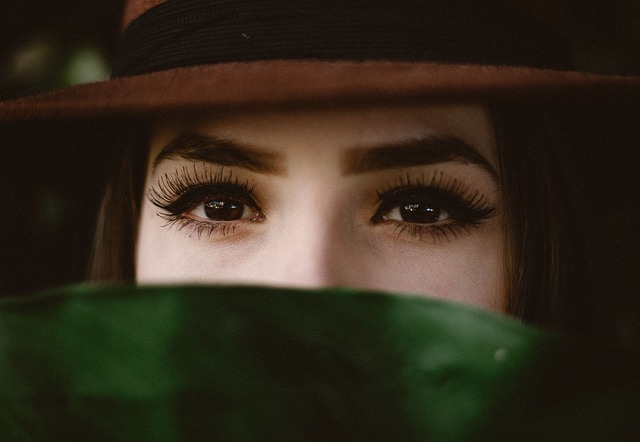
Brown eyes are the most common eye color in the world. Due to the iris’s high melanin content, which results in less light being reflected and more being absorbed, the color is brown. Brown eyes are therefore more naturally defended against the sun. Similar to darker skin’s ability to endure the hot sun for longer, this probably had evolutionary advantages. The genes that determine eye color and skin color are closely related.
Although brown eyes are the most common genetic eye color, people with brown eyes have more genetic variation than people with blue eyes. This could explain why brown eyes come in a variety of shades. These variations result from various genes on various chromosomes that carry genetic information about our ancestors’ eye colors.
Green Eyes
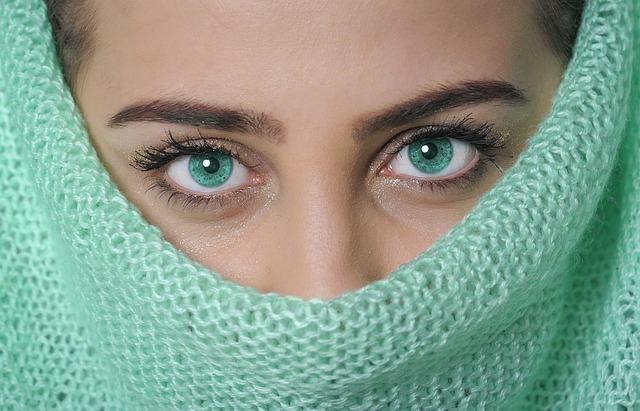
Green eyes are a rare color, occurring in only 2% of people worldwide. Low levels of melanin, but more than blue eyes, are produced by green eyes, a genetic mutation. No green pigment is present, just like in blue eyes. Instead, less melanin in the iris causes more light to scatter, giving the eyes a green appearance. Lighter eyes appear to change colors like a chameleon when the lighting changes.
Hazel Eyes

Sometimes people mistake hazel eyes for brown or green eyes. They are less common than green eyes but more uncommon than blue eyes. The genetic mutation that causes hazel eyes only affects about 5% of people worldwide. They have the most melanin, second only to brown eyes. . This eye color is distinct due to the contrast between having a lot of melanin (like brown eyes) and a lot of melanin (like green eyes).
Depending on the amount of melanin present, hazel eyes come in an infinite variety of shades of green, brown, and gold. Similar to how it does with blue and green eyes, the light scatters. Hazel eyes can appear to change color depending on the light, similar to how blue and green eyes do. Although perception alters, the actual color of the eyes does not. Hazel eyes may have originated from either brown or green eyes.
Read about Do Edibles Make Your Eyes Red?
Conclusion
Are blue eyes a sign of inbreeding? New research shows that people with blue eyes have a single, common ancestor. Researchers at the University of Copenhagen have located a genetic mutation that occurred between 6,000 and 10,000 years ago and is responsible for all living people with blue eyes. “We had brown eyes when we were young.”Blue-eyed individuals share a single common ancestor, according to recent research. All living blue-eyed humans on the planet today have a genetic mutation that occurred between six and ten thousand years ago, according to a team from the University of Copenhagen.
Many thanks for reading.

